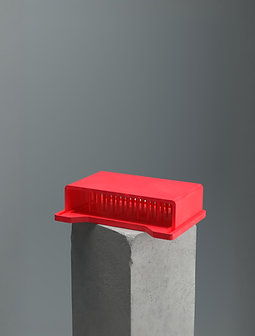2 days ago7 min read
5 days ago5 min read
7 days ago5 min read

Updated: May 25

Cell migration is a fundamental process in various physiological and pathological contexts, including wound healing, immune responses, and cancer metastasis. To study this phenomenon in vitro, researchers frequently use the scratch assay, also known as the wound healing assay. This method provides valuable insights into cell movement mechanisms and has applications across multiple scientific disciplines, including cancer research, pharmacology, tissue engineering, and developmental biology.
A scratch assay is a widely used technique to assess cell migration in laboratory conditions. It involves creating a "scratch" or cell-free gap in a confluent monolayer of cells grown on a substrate. This artificial wound mimics tissue damage, prompting cells at the edges to migrate into the gap. Researchers can monitor and quantify this migration under different conditions to analyze cellular behavior. The scratch assay is particularly useful for studying collective cell migration, where groups of cells move in coordination.
Scratch assays are widely utilized in multiple scientific fields, including:
Evaluating the invasive potential of cancer cells.
Testing the efficacy of anti-metastatic drugs.
Screening compounds that influence cell motility.
Supporting drug development for tissue repair and cancer treatment.
Studying cell-material interactions.
Optimizing biocompatible scaffold designs for tissue regeneration.
Investigating cell migration during embryonic development.
Understanding genetic and molecular influences on cell movement.
To ensure accurate and reproducible results in scratch assays, follow these best practices:
Ensure 100% confluence before creating the scratch for consistent results.
Manual scratching with pipette tips can cause inconsistencies. Use automated or standardized scratch devices for uniform width and edges.
Rinse cells with phosphate-buffered saline (PBS) before scratching to remove debris and prevent irregular migration patterns.
Perform assays under controlled temperature, humidity, and CO₂ levels to ensure cell health.
Minimize cell proliferation interference by using serum-free media when studying pure migration effects.
Even experienced researchers face challenges with scratch assays. Avoid these common pitfalls:
❌ Inconsistent Scratch Creation – Manual scratching leads to variability in wound size and shape. Use precise tools like CellCut for standardization.
❌ Damaging Adjacent Cells – Applying too much pressure can injure surrounding cells, altering their behavior.
❌ Uneven Cell Density – Inconsistent cell seeding leads to unreliable migration data.
❌ Lack of Controls – Always include untreated wells or known migration inhibitors for accurate comparisons.

To address the challenges of manual scratch assays, we developed CellCut, an innovative 3D-printed device designed to standardize scratch assays.
By positioning CellCut over a multi-well plate and performing a single motion, researchers can create consistent scratches across all wells—eliminating variability and improving experimental reliability.
✔ Enhanced Reproducibility – Standardized scratches reduce data variability.✔ Increased Throughput – Scratch multiple wells simultaneously, saving time.✔ Improved Accuracy – Uniform wound areas enable precise migration assessments.✔ Reduced Workload – Simplifies the scratch assay process, making it more efficient and reliable.
Interested in testing CellCut prototypes? Sign up for early access by visiting our CLYTE Partnership page or clicking the Get Started button at the top of this page.
🔬 Standardize your scratch assays with CellCut – the future of cell migration research!
References
A systematic review of the scratch assay for in vitro wound healing studies
A standardized scratch-wound healing assay for epithelial cells to investigate cell migration and proliferation: Getting the basics right
A scratch assay to study migration and invasion of cancer cellsmoleculardevices.com+3en.wikipedia.org+3pmc.ncbi.nlm.nih.gov+3
An effective device to enable consistent scratches for in vitro scratch assaysbmcbiotechnol.biomedcentral.com+1pubmed.ncbi.nlm.nih.gov+1
A novel magnet-based scratch method for standardisation of wound healing assaysnature.com
A cost-effective tool to standardize the scratch assay for cell migrationpubmed.ncbi.nlm.nih.gov+1nature.com+1
A robust and standardized approach to quantify wound closure using the scratch assaypmc.ncbi.nlm.nih.gov
AutoScratch Wound Healing Assay - Agilentagilent.com+1agilent.com+1
Scratch Wound Migration & Invasion - Live Cell Assays - Sartoriuspmc.ncbi.nlm.nih.gov+2sartorius.com+2pubmed.ncbi.nlm.nih.gov+2
Measure cell migration using a simple scratch assay with time-lapse live-cell imagingmoleculardevices.com
Agilent xCELLigence RTCA AccuWound Scratch Assayagilent.com

